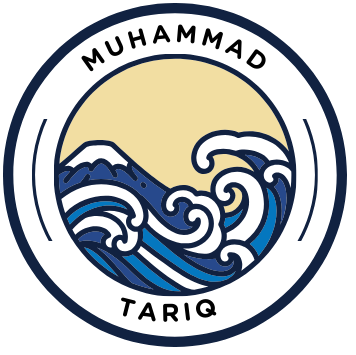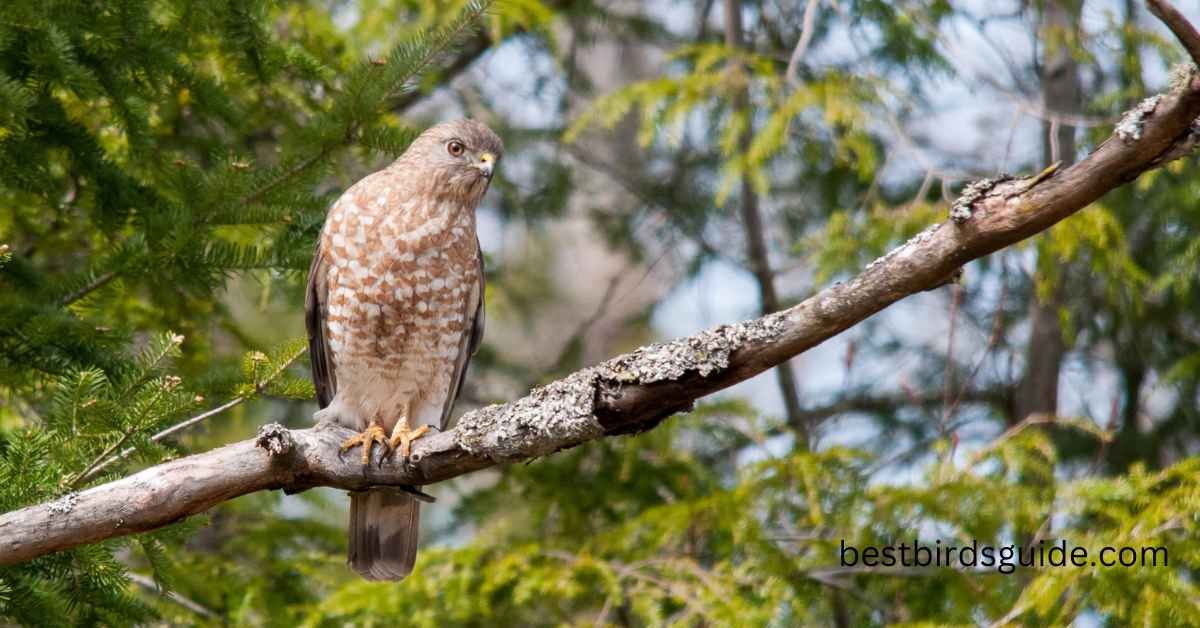Hawks in New York have been an exciting part of the city’s wildlife for centuries; these are unique species found in most parts of the United States. New York is no exception to this rule, as hawks have been reported throughout the state for centuries. These majestic birds of prey take advantage of the numerous lakes, rivers, and wooded areas throughout the state.
Hawks have made their home in the densely populated city for many years, but the traditional urban landscape has yet to provide many opportunities for these creatures to survive. With fewer natural nesting sites available, their numbers had been steadily declining.
Different Species of Hawks in New York
Hawks are predators that have been an integral part of the environment in New York for centuries. Hawks of various species can be found throughout the state, although some are more prevalent than others. They’re an incredible sight to behold as majestic and powerful creatures, especially when soaring through the sky on a summer day.
Red-Tailed Hawk

The red-tailed hawk is a majestic and powerful bird of prey that has become an iconic symbol of New York City. These raptors have been living in the city since the early 1900s when they first began residing in Central Park. Today, red-tailed hawks are soaring around the skyscrapers and townhouses of Manhattan, Brooklyn, Queens, and Staten Island.
These birds are intelligent hunters that feed on small mammals such as mice and voles. They also consume reptiles, amphibians, insects, and other birds. In urban areas like NYC, red-tailed hawks often hunt pigeons and starlings for food. Red-tailed hawks are easily recognizable by their characteristic rusty red tail feathers; they also have broad wingspans ranging from 30 to 43 inches long.
Specifications
• Scientific Name:ButeoJamaicensis
• Length: 17.7-25.6 inches
• Weight:38.8 ounces
• Wingspan:40-60 inches
Cooper’s Hawk

Cooper’s hawks are a majestic species of bird that has recently begun to make its presence known in the New York City area. This North American raptor, also known as Accipiter cooperii, is a medium-sized hawk with distinctive features that make it easily recognizable.
Male Cooper’s hawks have slate-gray upperparts and tail feathers, while their underparts are lighter shades of white with reddish barring. Females feature brown streaking on their backs and pale undersides.
These birds of prey consume primarily small mammals, especially cottontail rabbits and rodents such as mice and voles. Occasionally they will catch smaller birds, such as robins or cardinals, but this behavior is rare in urban areas like New York City.
Specifications
• Scientific Name: Accipiter Cooperii
• Length:13.7-19.7 inches
• Weight:18.7 ounces
• Wingspan:29.5-37 inches
Red-Shouldered Hawk

The Red-Shouldered Hawk are iconic species of hawks in New York. This medium-sized bird of prey is a common sight for many city dwellers, with its distinctive red shoulders and loud call. The Red-Shouldered Hawk can be seen soaring through the skies over urban parks, forests, and marshes throughout the state.
These hawks are adaptable creatures that prefer to nest in tall trees like oaks and sycamores. They feed mainly on small mammals like mice, voles, squirrels, and other small birds. They also hunt from perches in trees or from the ground. During the winter, they migrate south, finding more abundant food sources than those available in New York’s colder climate.
Specifications
• Scientific Name: Buteolineatus
• Length: 16.9-24 inches
• Weight: 21.5 ounces
• Wingspan: 36.20-42 inches
Northern Harrier Hawks in New York

The Northern Harrier is a fantastic creature of the sky, a graceful hawk that soars above New York State’s diverse habitats. This species was once plentiful in the area, but its population has decreased since the late 20th century due to habitat destruction and other human-caused disturbances. The conservation of this majestic raptor is essential for maintaining healthy ecosystems and bird populations in New York.
With its long tail and wingspan, the Northern Harrier can often be seen hovering or gliding low over fields, marshes, wetlands, and open woodlands, searching for prey. It has keen eyesight and uses its acute hearing to detect movement below as it scans for small mammals and birds on which to feed.
Specifications
• Scientific Name: Circus Cyaneus
• Length:16-20 inches
• Weight: 10-26 ounces
• Wingspan:38-48 inches
Sharp-Shinned Hawk

Sharp-Shinned Hawks (Accipiter striatus) are small, agile raptors in many North American habitats. Recently, this species has been spotted in the state of New York. It’s a welcomed addition to the local bird community and an essential part of the diverse ecosystem there.
This species is characterized by its slim, long body and wingspan, reaching up to 22 inches. Its plumage is gray above and white below, with vertical streaks throughout its feathers. The sharp-shinned hawk is a highly adaptable bird that can live anywhere from suburban backyards to dense forests or even open fields. It prefers to remain high in trees while hunting for smaller prey such as songbirds, rodents, and insects.
Specifications
• Scientific Name: Accipiter Striatus
• Length:9-14.6 inches
• Weight:2.9- 7.75 ounces
• Wingspan:16.5-26.7 inches
Broad-Winged Hawk

The Broad-winged Hawk is an iconic bird of prey that can be found across North America, but its population in New York State has been steadily declining for decades. This majestic species of hawk is known for its broad wingspan and distinctive call, which can often be heard echoing through the forests of New York’s many parks and nature reserves.
However, recent studies suggest that this sharp drop in numbers may be linked to habitat loss from human activity. These hawks need large areas with plenty of mature trees to hunt and nest in, so shrinking woodlands pose a significant threat to their survival. In addition, the Broad-winged Hawk’s reliance on forest insects as food has significantly suffered due to deforestation, agricultural expansion, and climate change.
Specifications
• Scientific Name: ButeoPlatypterus
• Length:13-17 inches
• Weight:15.8 ounces
• Wingspan:31-40 inches
Rough-legged Hawk

New York is known for its abundance of wildlife, and one species that isn’t commonly seen in the state is the Rough-Legged Hawk. This large hawk is usually found in the Arctic tundra or northern boreal forests. It migrates south during the winter to avoid colder temperatures and search for food sources such as mice, voles, and other small mammals.
The Rough-legged Hawk has recently been spotted several times across New York this winter season. Sightings have been reported upstate near Rochester, Syracuse and downstate around NYC and Long Island. The hawk appears to be in good health, but it’s unclear how long it will stay or why it chose New York specifically for its migration.
Specifications
• Scientific Name:ButeoLagopus
• Length:18 to 23 inches
• Weight:6.7 ounces
• Wingspan:52.7 inches
Northern Goshawk

New York is home to various wildlife, including the Northern Goshawk. This bird of prey can be found throughout the state and is easily recognizable by its grey color, white chest, and yellow eyes. The Northern Goshawk is one of the largest species of hawks in North America and has been known to reach lengths up to 24 inches with a wingspan between three and four feet. It can also weigh anywhere from two to five pounds.
These birds are very versatile in their habitat choices, as they can be found in coniferous forests and deciduous woodlands during different parts of the year. They feed on small mammals such as rabbits, squirrels, mice, voles, and even birds when available.
Specifications
• Scientific Name: Accipiter Gentilis
• Length: 20.9 to 25.2 inches
• Weight:22.3 to 48.1 ounces
• Wingspan:40.5 to 46.1 inches
Conclusion
The presence of hawks in New York City is a unique feature of the urban environment that should be appreciated and taken care of. With appropriate measures, including the installation of hawks boxes and extra bird feeders, human residents can help ensure the health and safety of these birds. Furthermore, more research needs to be done on how to conserve habitats for these animals. As residents, we are responsible for promoting hawk conservation efforts so that future generations can also appreciate them in their natural environment.
Read More: 9 Species of Hawks in Nevada

